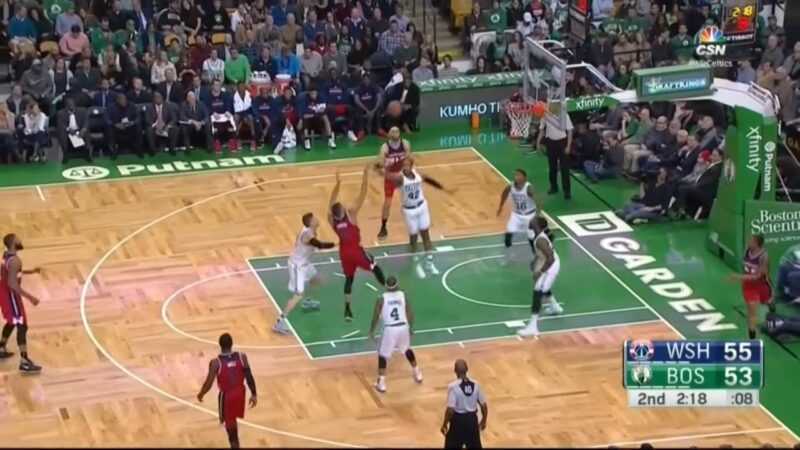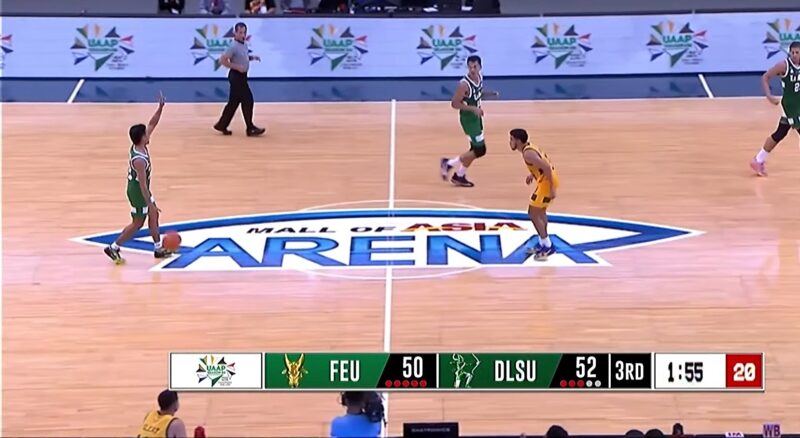
All offenses use the same basic tactical skills. Different offenses emphasize different skills or combine the skills differently, but if players understand the basic tactical skills, they can play in any system.
Vern Gambetta presented the idea of adapted vs. adaptable athletes. In terms of game awareness and understanding, the adapted player learns a specific offense and runs from spot to spot because the coach tells him where to go. An adaptable player understands the fundamental principles and cuts to a spot because it is the right cut or the open space, not just because the team’s offense dictates that a player cut to a certain spot.
The Flex Offense is a series of cross-screen-down screen actions. However, when I learned Flex, we never learned the basics. When we received the cross-screen, we ran to the block; when we received the down screen, we ran to the elbow.
We adapted to the offense. We knew where to run within the offense, but when we left and played for a coach with a different system, we could not adapt our knowledge of screens to a new system. We knew how to use a screen specifically – provided it was within the Flex – but we never learned to use a screen generally in a way that we could adapt to any offense.
Spacing
In youth basketball, spacing is often condensed because the lack of strength impacts the length and speed of passes and the distance from which players can shoot successfully.
However, the more that a team spreads the court and forces the defense to defend from sideline to sideline, the more space the offense will find for open and higher percentage shots. As St Louis University Head Coach Rick Majerus says, “Offense is spacing and spacing is an offense.”
1. Floor Spacing
- Ideal court spacing is to have 12 to 15-feet of space between players.
- Use numbered spots to teach spacing: five spots outside the three-point line and four spots inside the three-point line.
- When the ball moves, all the offensive players move to a new spot.
- To keep the good floor spacing, some basic sets are:
Four players out and one player inside and low.
2. String Spacing
- Imagine you are on a string: keep the string taut. Do not let the string get too lax or so tight that it rips.
- When a player dribbles in your direction, you have three primary options: (1) Flare; (2) Cut backdoor; or (3) Loop.
- If your teammate dribbles toward you, flare away from him to keep the string taut.
- If there is no more room to flare, cut backdoor or loop behind the dribble. If you loop, keep space between you and the ball handler so your defender cannot steal the ball. Before you cut backdoor, see if there is space for the cut.
- If he drives away from you, loop behind him to keep the string taut. Follow to the open area where the drive vacates.
Cuts
 A cut is a sudden change of direction, which players use to get open or set up a screen.
A cut is a sudden change of direction, which players use to get open or set up a screen.
1. V-Cuts
- Cut in one direction to set up the cut, plant, and cut at a different angle (making the shape of a V).
- To cut from block to block, set up the cut by cutting low; as the defender reacts to the initial cut, plant, and cut over the top of the defender.
- To set up a screen, cut in one direction, plant, and cut in another direction to rub off the screen.
- Add a change of pace to the change of direction to increase effectiveness.
2. L-Cuts
- Cut in a straight line toward the ball, plant, and cut at a sharp angle (shape of an L) to break away from the defender.
- Start on the block and cut straight up the lane line. Assuming the defender denies the pass to the elbow, step into the defender, plant, and cut to the wing.
- Use a change of pace: it is not how fast you cut that determines your ability to get open. Make contact with the defender – without pushing off – to get the defender on his heels and clear a passing lane for the passer.
3. Give-and-Go
- After passing, cut. Defenders often relax or turn their heads to follow the ball after their player passes. This makes it the easiest time to get open.
- The first player (P1) passes to the second player (P2) and cuts. P2 catches and passes to P1.
- If P1 is not open, he can fill an open spot or set a screen for another player. Meanwhile, another player cuts to replace his spot.
Screens
The screen, when executed properly, is a legal maneuver where a player blocks a defender to help his teammate get open. To set a legal screen, the screener cannot move into the defender; he must be stationary and allow the defender to run into him.
1. Setting Screens
To set a good screen:
- Headhunt: find the defender and move to him rather than relying on your teammate to run his defender into the screen.
- Jump stop a half-step before running into the defender.
- Set a strong screen with a wide base.
- Communicate verbally (“Use me!) or non-verbally (closed fist) with your teammate so he knows that you are setting a screen.
- Move opposite the cutter – if he cuts to the basket, roll high; if he cuts high, roll to the basket.
- The better the screen that you set, the more likely you are to force your defender to switch or hedge, which gets you (the screener) open.
2. Using Screens
To use a screen:
- Run shoulder to hip off the screen to prevent your defender from fighting through the screen.
- Wait for the screen to be set to prevent a moving screen and to force the defender to show how he is going to defend the screen. St. Louis University Head Coach Rick Majerus says that it is better to be late than early when using a screen.
- Read the defense and make the appropriate cut.
- Show a target to the passer.
3. Cross Screens
- Move across the court to set a screen, like an underneath out of bounds play or a post to post screen with the ball on the wing.
- Set a hard screen and seal; if the defense switches, the screener should be open in a good position close to the basket.
- Cutter cuts below the screen or on top of the screen depending on the way his defender plays him.
- If his defender trails the screen, the cutter cuts toward the ball.
- If his defender goes under the screen, the cutter fades higher to create an open passing lane.
4. Down Screens
- Wait for the screen; it is better to be late than early when using a screen.
- Read your defender and make the appropriate cut:
- If the defense follows the offensive player around the screen, the offense curls off the screen toward the ball and basket.
- If the defense goes underneath the screen, the offense flares or fades away from the screen.
- If the defense beats the offensive player to the screen, the offense cuts backdoor.
- If the defense fights through the screen, the offense straight cuts away from the defense.
- Show the passer a target and be ready to catch the pass as soon as you hit the screen.
5. On-Ball Screens
To set the on-ball screen:
- Set the screen inside the ball handler’s shooting range so the defense cannot go under the screen.
- Set a strong, wide screen.
When using the screen:
- Get low to protect the dribble.
- Go shoulder to hip with the screener.
- Run your defender into the screen.
- Turn the corner and get into the lane for a shot or pass.
- Extend a hedge or trap with a second dribble to force a switch, create a better passing lane or open a shot or lane to the basket when the defenders recover.
- Attack; do not decide to pass before the play develops.
Help Defense
Team defense depends largely on a coach’s strategy. However, the overall defensive goal is to prevent easy shots and limit the offense to one shot. Stop the ball in transition and keep the ball out of the key (three-second area).
When teaching man-to-man defense, the help defense concept is difficult for young players to comprehend because of the ambiguity: sometimes you defend your man, but other times, you defend another man. The important point for players to understand is that each player defends his own man, but everyone defends the ball.
The priority for each defender is:
- ball;
- basket;
- your man.
In transition, for instance, players need to understand that stopping the ball and protecting the basket take precedence over finding their own man to defend. For young players, these are hard concepts to understand.
Help Defense Basics
Different coaches have different defensive philosophies. These ideas are just a couple basic rules to use with young players when teaching help defense.
- Head on a swivel; see ball and man at all times.
- When the ball moves, everybody moves. When your man moves, you move.
- The further your offensive player is from the basket, the further you can be from him when playing help defense.
- Communicate. Every player needs to communicate. Use small phrases.
- Contest every shot. Force players to dribble into a shot: do not allow a catch and shoot.
- Possession does not end until the defense gets the rebound. Everyone blocks out and rebounds.
No Splits
- Do not get split. Do not allow the ball handler to drive between his defender and the help defender.
- Help over not up.
- Play the gap to discourage penetration.
- Do not over-commit: read the angle of the drive. If the ball handler’s drive is toward the sideline or baseline, stay with your man. If the ball handler turns the corner to the basket, slide over and force the pass.
Weakside rotation on penetration
- Weakside rotation must step in front of posts to eliminate interior passes and offensive rebounds if the post leaves to help.
- Weakside defenders are on a string: if the bottom defender moves to the strong side to help, the next defender drops.
- Protect the basket first and then move away from the basket to worry about shooters.
Fast Break
 Transition is the easiest way to build offensive confidence because of the open space and numbers advantage. The defense is disorganized, and you learn to attack its weakest point.
Transition is the easiest way to build offensive confidence because of the open space and numbers advantage. The defense is disorganized, and you learn to attack its weakest point.
When the defense is set, you must choose the right tactics and strategy to disrupt or disorganize the defense so you have the advantage, but transition plays provide the advantage.
1. 2v1 Fast Break
Two rules:
- Always finish a 2v1 fast break with a lay-up; and
- Always be the second man. Never assume that your teammate will make a lay-up.
Spread the court and attack aggressively.
Mistakes occur when:
- you attack passively, and the defender takes away your passing lane forcing you to shoot, or
- the player without the ball runs too far ahead and becomes a stationary target.
2. Ball Handler:
- Attack from just outside the lane-line to spread the court.
- Dribble with your inside hand to facilitate an easier pass.
- Force the defender to stop the ball completely; if he plays in-between, finish.
- Veer away from the pass to avoid an offensive foul.
3. Non-Ball Handler
- Sprint just outside the lane line.
- Trail one step behind the ball handler to facilitate an easier pass, catch and finish.
- Run with hands up ready to catch the pass.
4. 3v2 Fast Break
- Make the defense stop the ball; whether attacking in the middle or on the wing, force a defender to play the ball.
- Spread the court: by running on the sideline, it is easier to look back for the pass over your inside shoulder.
5. Press Break
Use Diamond Spacing to organize the attack and defeat pressure. When the defense traps, form a diamond:
- One player is ahead of the ball (P2)
- One is behind the ball (P3)
- And one is diagonal through the trap (P4).
- The fifth player (P5) runs to the front of the rim.
Loop

When trying to read the press, use the inbound passer to loop. After passing, sprint up the middle and loop to the ball side. If the defense intends to trap, this will show the trap and the cutter will be open. If not, the loop clears the help defense and the ball handler has more space to handle the ball 1v1.
The inbound passer must read the situation. If the defense traps the first pass quickly and aggressively, the inbound passer should check to the ball to give his teammate a retreat pass. If the defense does not trap quickly and aggressively, he loops to open space to force the defense to identify itself if it plans to run and jump or trap on the dribble.








